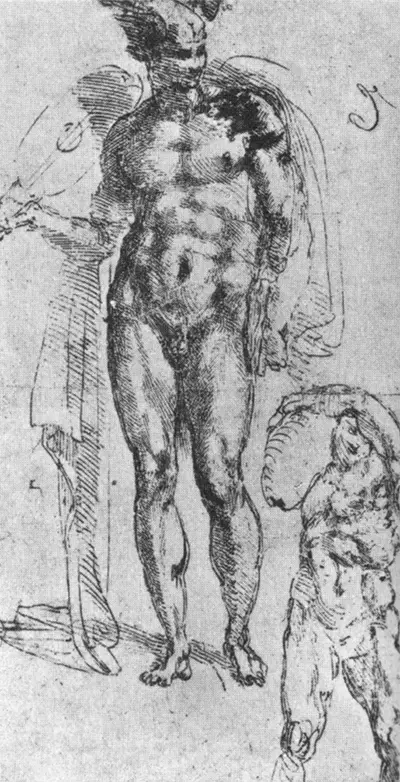Several items from Michelangelo's career have been lost over the years, whilst some others have had their connection to the artist's hand significantly questioned. This is an entirely normal scenario for any artist from the Renaissance, with so much time having passed since then. Some documentation was taken, particularly with regards contracts, and these have helped us to learn more about the timelines of his major projects, but lesser known pieces, including some of his drawings, would never have had such a level of background administration. It is for that reason that his sketches are particularly prone to discussion over attribution, as well as being a naturally fragile medium that could easily be damaged over time. One of the real differences with Michelangelo was his ability to actually master successfully so many different disciplines, which marked him out as a true Renaissance Man.
A later artist worthy of note was Gian Lorenzo Bernini, who, like Michelangelo, was primarily a sculptor but also was highly skilled as a painter and draughtsman. He followed on around a century later and gifted us the likes of Apollo and Daphne, St. Peter's Baldachin plus his own version of David. Bernini would take the advancements of the Renaissance and push things onwards once more, as we started to move into the Baroque era in which a further stage of innovation would spread across Europe. It would be after this that Italy's dominance of Europen art would weaken, with notable names appearing from Northern Europe, France and Spain. There have been several transitions over the centuries and currently the US and UK are much more significant too than would have been the case previously.
Cupids would appear several times within Michelangelo's career, often as supporting elements within his paintings. These was symbolic figures that could also help to vary the sizing of different people within each work. They helped to symbolise love in some cases, as well as providing help and assistance in other cases. Standing Cupid, sadly, will likely never be seen again and we are left just with a single drawing which is believed to indicate how it originally looked, but this is not a major loss because of the large amount of successfully attributed items that still remain from his career, including highlights such as the iconic David, Pieta and also his series of frescos across the interior of the Sistine Chapel.


